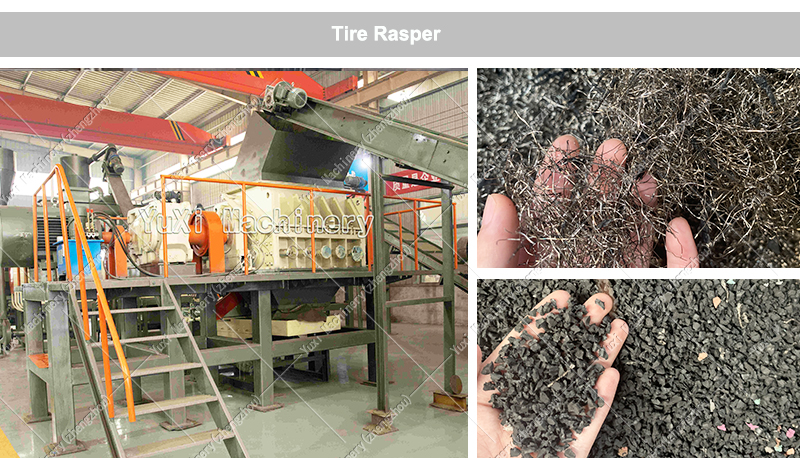Tire shredder key parameters
Hello! If you’re considering entering the promising scrap tire recycling industry, an efficient and reliable tire shredder is undoubtedly the “heart” of your production line. Faced with a wide variety of equipment on the market, how can you make a wise choice? As an equipment manufacturer with many years of experience, we recommend that you first focus on the following key parameters:
1. Processing Capacity (Output)
This is the most intuitive parameter and directly determines your return on investment. You need to ask yourself:
“How many tons of tires do I need to process per day/hour?”
Processing capacity is typically measured in tons/hour. Small equipment may process 1-3 tons per hour, while large production lines can reach over 10 tons. Choose the right model based on your supply and business plan to avoid over-stretching or wasting your investment.

2. Motor Power
The motor is the “heart” of the shredder, and its power directly determines its power and energy consumption.
Higher power means greater shredding force, making it easier to process large truck tires and construction machinery tires, but it also results in higher energy consumption. Low-power equipment offers lower costs and lower energy consumption, but may not be able to handle larger radial tires or those with a high number of steel wires. Be sure to select the appropriate power level based on the type of tire you primarily handle.
3. Blade Material and Construction
The blade is the “teeth” that come into direct contact with the tire, so its quality and design are crucial.
Material: Be sure to choose blade made from wear-resistant steels such as high-alloy steel, D2, and DC53, and undergoing a special heat treatment process. These tools offer high hardness and wear resistance, extending their service life and significantly reducing ongoing maintenance costs.
Construction: Inquire whether the tool is removable, repairable, and has replaceable tips. Modular tool designs can significantly reduce downtime and replacement costs.
